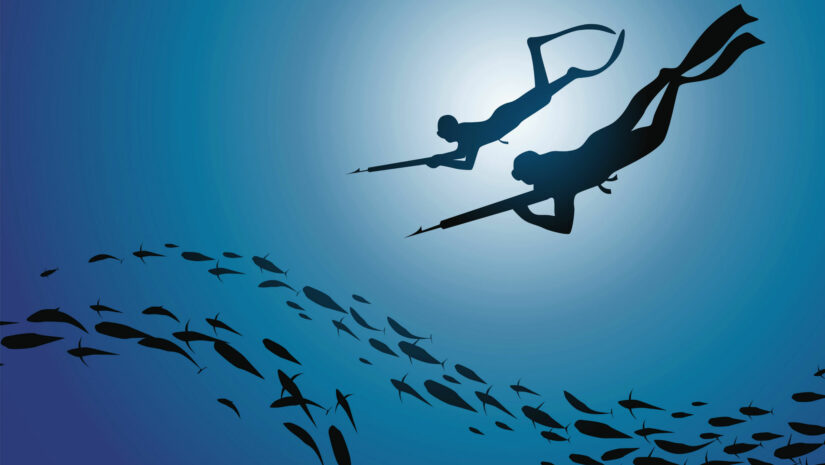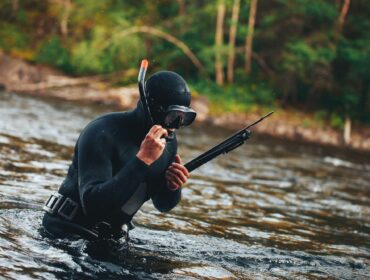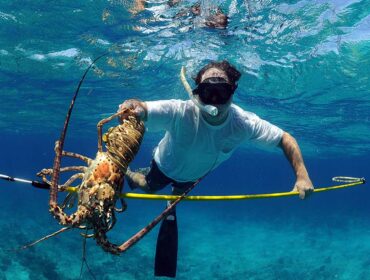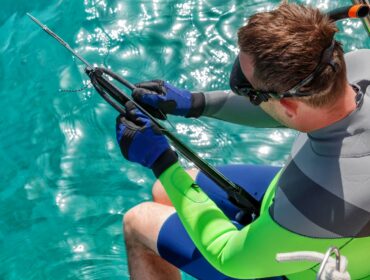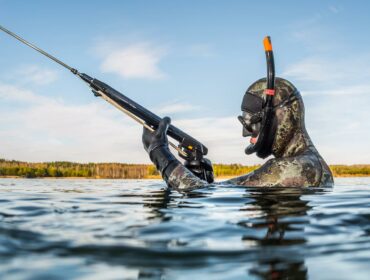Spearfishing is an ancient method of fishing that’s practiced all over the world. Today, it’s still one of the most preferred and eco-friendly methods of acquiring fresh and nutritious seafood as it doesn’t require weapons or other dangerous instruments that can cause water pollution. Best of all, it can be a lot of fun!
Before you start the dive or go hunting for a sizeable snapper or bass, you’ll need to make sure you have all you need for the catch. It may help to consult other professionals for recommended equipment that you can use for a specific location, as the gear you may need in the Caribbean may not work for spearfishing spots in New Zealand or San Diego.
But to give you a general idea, here are the basic tools and equipment you’ll need for a safe and enjoyable spearfishing experience.
Basic Spearfishing Gear
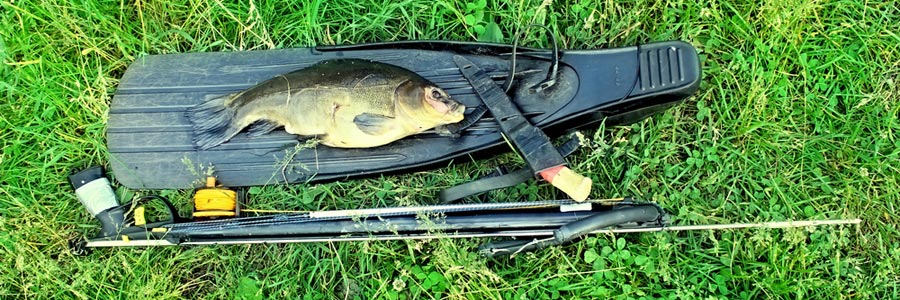
Any professional spearfisher or “spearo” would know that having the right spearfishing gear is essential to ensuring your safety and success. Below you’ll find the most basic spearfishing equipment that you may have to purchase for your first foray into spearfishing, as well as suggested brands that are popular and highly recommended by other spearos.
Fishing License
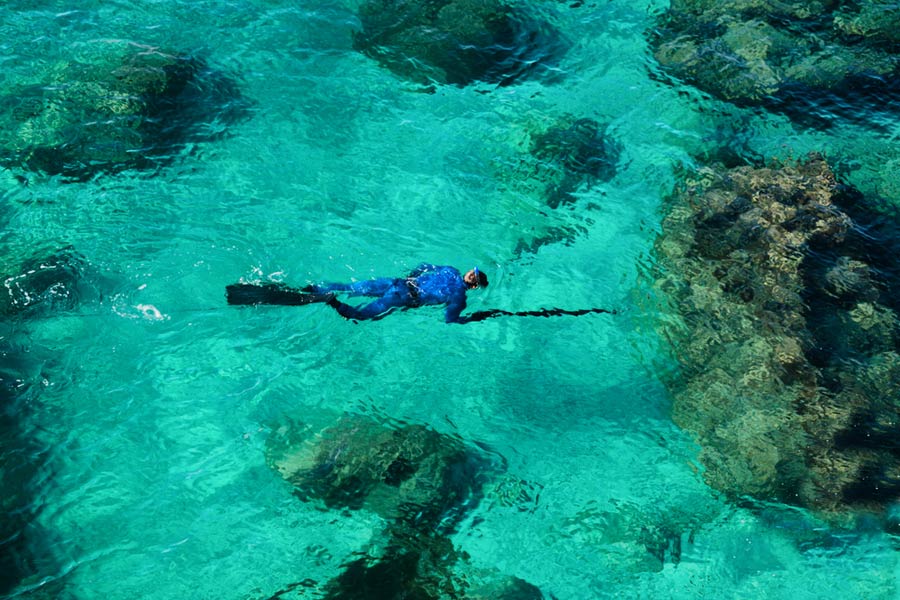
While technically not part of your fishing gear, you may need to acquire a valid sportfishing license before you hit the water with your hunting equipment. In most states, you can get fined for fishing without a license, and you can even be sentenced to prison time for hunting (and killing) protected species.
As a rule, you’ll want to check with your local agencies, lifeguards, fishermen supply and dive shops, and other experienced spearos for information before doing anything.
Note: It goes without saying, but beginners should also make sure that they are able enough to go diving in different water conditions and locations before even thinking of hunting underwater. This includes acquiring professional-level knowledge and skill in hunting, spearfishing techniques, and apnea breath-holding or scuba diving.
Weapon of Choice
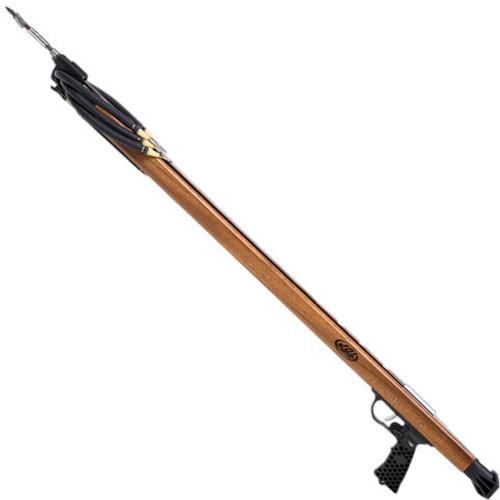

Now on to your primary weapon for spearfishing: Hawaiian slings, pole spears, or a speargun. Hawaiian slings and pole spears both require you to be very close to the fish, but the difference is that the sling’s band will typically remain in your hand while the pole spear leaves your hand completely when you use it to spear a fish. As for the speargun, they vary depending on the construction—some are manually launched using a band or sling, while others are air or gas-powered (pneumatic).
If you decide to go for a speargun, you’ll need to consider the visibility of the water and the size of the fish that you will be hunting before deciding on what kind to purchase. Low-visibility areas would require you to move in closer, which makes shorter spearguns more ideal. And unless you’re hunting for a bigger fish, you won’t necessarily need thick shafts or an air-powered speargun. In most cases where you may only need a mid-size, multiple band speargun with extra reach, you can get away with roller guns.
You’ll find spearguns in pretty much every equipment store that sells spearfishing equipment. JBL produces good entry-level spearguns, so check out the Woody Sawed Off Magnum Spear Gun from this brand if you’re looking for a weapon that’s low maintenance, easy to use, and packs a punch. But if you prefer pole spears, you might want to go with the 5-pronged Lionfish Pole Spear or the JBL 6′ Breakdown Travel Pole Spear.
Spearfishing Wetsuits and Rash Guards

One of the most vital items you’ll need before spearfishing—or diving, for that matter—is a wetsuit. There are many kinds and types of wetsuits to choose from, depending on the water temperature and underwater activity.
For spearfishing, you’ll want to consider the suit’s thickness, especially when diving in warm climates. It’s usually advisable to go for one that’s no thicker than 1.5mm, unless you’re doing deeper dives in colder water. If you’re not going to be performing deep dives or staying in the water for long periods of time, you can get away with just wearing a rash guard.
Whether you’re going for a full body wetsuit or a rash guard, choose one that has a camouflage print or color so you can avoid detection—after all, you don’t want the fish to see you coming! Ideally, it should also have chest padding (also known as a loading pad) to help ease pressure from constant speargun reloading.
You can find wetsuits and rash guards from Body Glove, JBL, Xcel, Riffe, Mako, Cressi, Beuchat, Rob Allen, and Hecs. Salvimar also makes quality spearfishing suits, such as the Atlantis Camu 1.5mm Two-Piece Wetsuit with sternum reinforcement for added comfort when reloading your speargun.
Mask and Snorkel
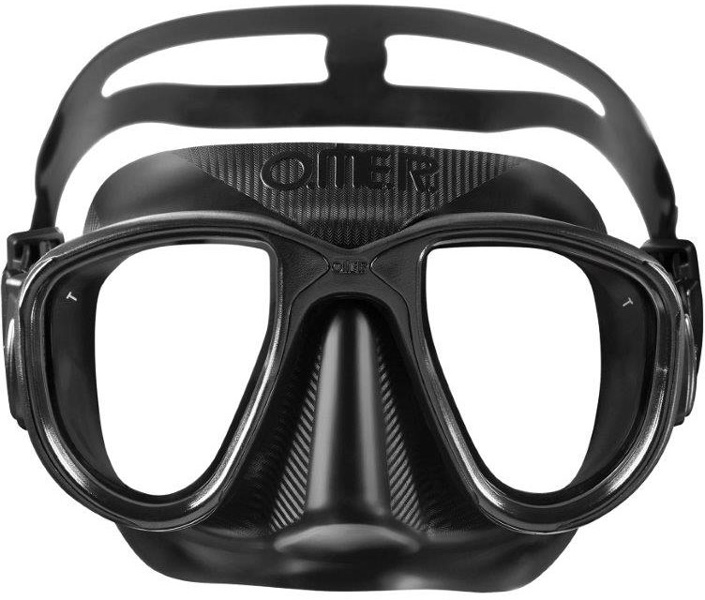
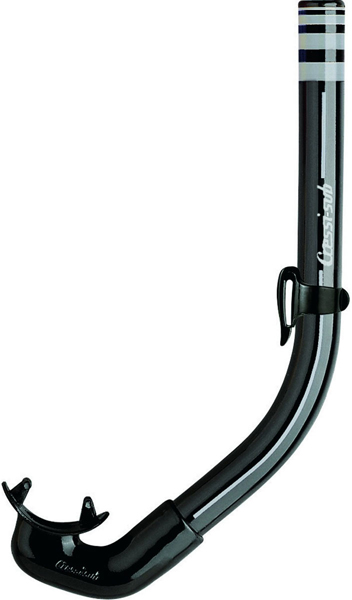
When choosing a mask for spearfishing, there are several things you’ll need to remember. First, you’ll want to go for a low-profile mask, which allows much less air in and reduces the pressure that you have to deal with when you equalize underwater.
Next, choose one that offers the most visibility. We don’t mean you should automatically go for see-through lenses—those are only best for clear waters. If you’re going to be diving in low-visibility areas, go for colored lenses as these are designed to increase the contrast and make you see better underwater. Meanwhile, mirrored lenses are great for hiding your eyes and can potentially attract fish due to the reflection.
Finally, ensure that the mask not only looks good and serves its purpose, but also feels “right” on the face. Some masks fit wide faces better while others are recommended for a much narrower visage. Try them on without the strap and suck in some air through your nose to create an airtight seal. If the mask stays on your face, then it’s a good fit.
Spearos usually go for masks from Cressi, Mako, Omer, Riffe, and Salvimar. You may also want to check out the Alien Spearfishing & Diving Mask from Omer if you’re looking for a dark, low-profile rubber mask with clear lenses.
As for the snorkel, go for any J-shaped one. You don’t even need one that has purge valves or splash flaps; a simple and flexible one like the Cressi America Black Snorkel would do.
Gloves
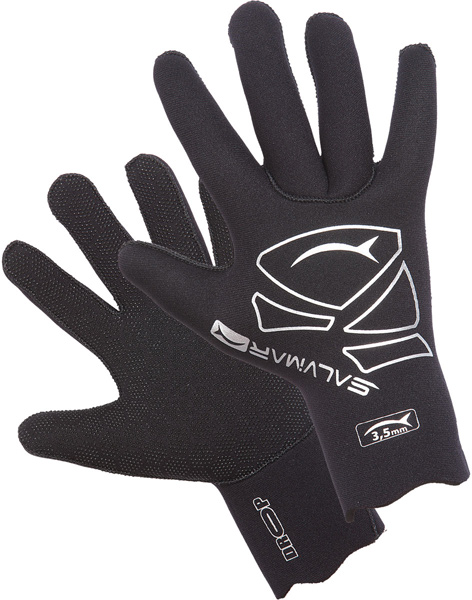
Gloves are extremely helpful for providing warmth and protection for your hands without hindering you from reloading your speargun. Thin gardening gloves or thicker ones that you wear for surfing might work, but you may want to go for purpose-built spearfishing gloves (such as those made of Kevlar) to make sure they’re lightweight and comfortable yet sturdy enough for the sport.
The Salvimar Drop Neoprene 3.5mm Gloves are a great choice if you want a durable, ergonomically-designed pair that provides extra warmth. Other popular brands of quality spearfishing gloves include Hecs, Headhunter, IST, and Riffe.
Booties
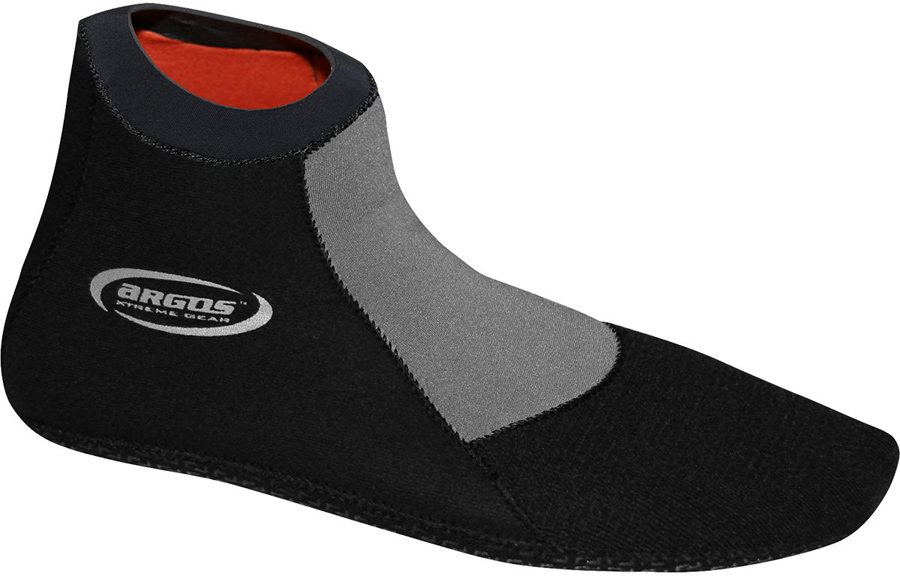
As for your booties, you’ll want comfortable ones that are just thick enough to keep your feet warm and provide a soft barrier between your feet and fins. For this, you may want to check out the Argos Spearfishing Stealth Shortie. Designed for maximum comfort and performance, this pair features various materials that offer unique comfort or protection for different parts of the foot.
Freediving Fins

While many spearos prefer to do so on scuba, that doesn’t mean they need to strictly stick to their scuba gear. For an enhanced freediving and spearfishing performance, most prefer freediving fins, as they help you get the right propulsion and help you conserve your energy as you dive deeper into the water.
You can choose from plastic, fiberglass, or carbon fins. If you’re a beginner, you can save a lot of money on quality plastic fins. But if you want better-looking fins that require lower energy expenditure, you can invest in fiberglass fins.
Carbon fins cost the most, but only because they provide the most comfort and require the least amount of energy.
Beuchat Mundial One-50 Spearfishing Fins are worth checking out if you want reliable plastic (polypropylene) fins. For other quality fin brands, check out C4, Alemanni, Cressi, Riffe, Deep Apnea, and Dive R.
Weight Belt
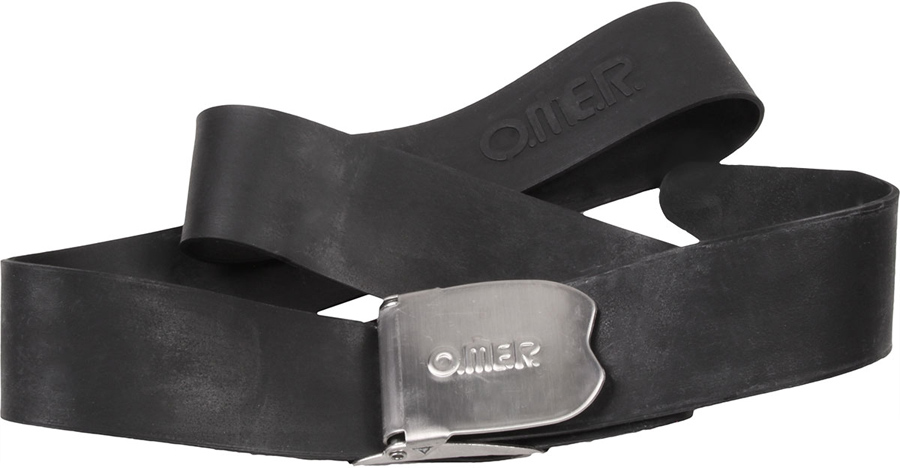
To ensure that you don’t float to the surface while in your naturally buoyant wetsuit, you’re going to need a weight belt around your waist. These highly durable belts are designed to hold lead weights (or fishing sinkers) together so you can wear just the right amount of weight for your body to achieve neutral buoyancy after exhaling on the surface of the water.
Since your buoyancy is one of the things you shouldn’t have to worry about when you’re focused on catching your prey, it’s best to choose a high-quality belt like the Omer Rubber Weight Belt, which compresses and expands along with your wetsuit so you won’t have to worry about adjusting it for the perfect fit during descent and ascent.
Spearfishing Knife
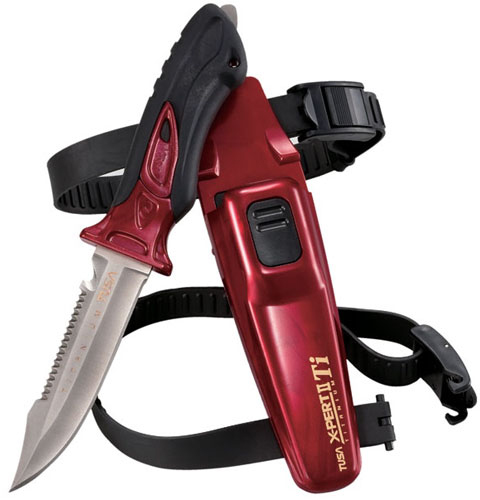
As with every functional knife, the one you will need for spearfishing has to be durable, always sharp, and resistant to rusting. And contrary to popular belief, it’s not primarily for hunting fish but for cutting spearfishing lines, ropes, seaweed, and other objects that you may get entangled in while underwater.
Spearfishing knives help keep you safe, so you’ll want to go for quality on this one. You don’t need to go for a big knife either, as those tend to get caught in kelp. Look for a small one that has a sharp edge, preferably from well-known brands like TUSA. Their X-Pert 2 Titanium Knife features a line cutter and serrated edge on the other side of the sharp blade, making it a highly versatile option.
Dive Computer
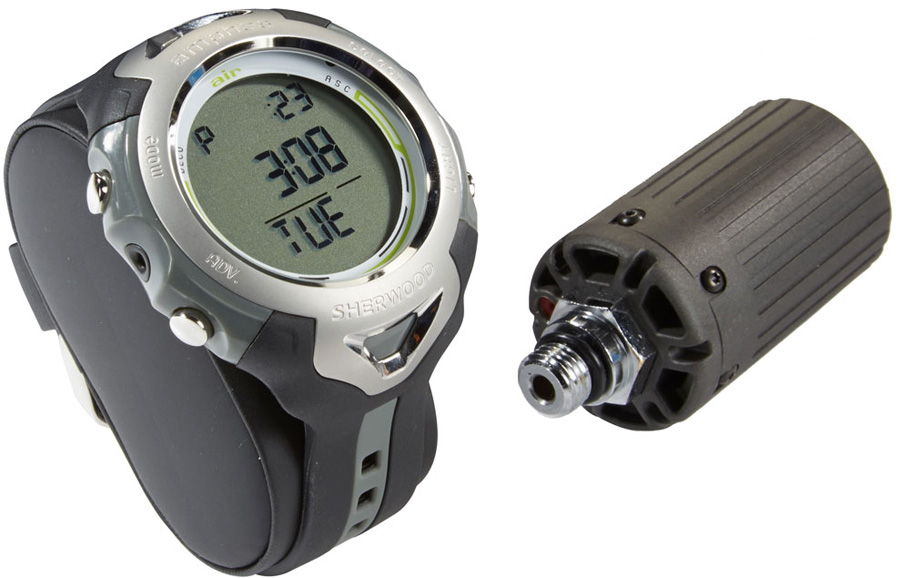
Another piece of equipment that you may want to invest in is a freediving watch. The best scuba dive computers will help you keep track of your depth and dive times, as well as your training and improvement. An important factor to consider is its readability, as you wouldn’t want to have a hard time viewing and understanding the display at any time throughout your dives.
Some dive watches feature a heart rate monitor and an export option so you can download your dive data. Whatever you choose, make sure it has batteries that can last for days and doesn’t have too many functions that can be distracting and overwhelming, especially if you’re a beginner.
Brands like Cressi, Suunto, Mares, Oceanic, Omer, and Sporasub produce computers specifically designed for freediving and spearfishing. You can also check out the Sherwood Amphos Air Computer if you want a dive computer that you can use for spearfishing and your more technical scuba dives.
Floatlines, Floats, or Reels

Once you catch your fish, the game may not be over yet. What do you do when you’ve run out of energy, and your fish decides to swim in the other direction? Instead of struggling, you can either attach a floatline (with a float) to your speargun so you can pull both the fish and your gun, or use a reel to bring the fish in once you’ve reached the surface.
Many would recommend using a reel, especially since it keeps your gun from slipping out of your hands after catching a particularly large and strong fish. Something like the Omer Match Sport Reel, which has a belt fitting and line capacity of 50 meters will help keep your gun and fish secure.
Bonus: Dive Buddy
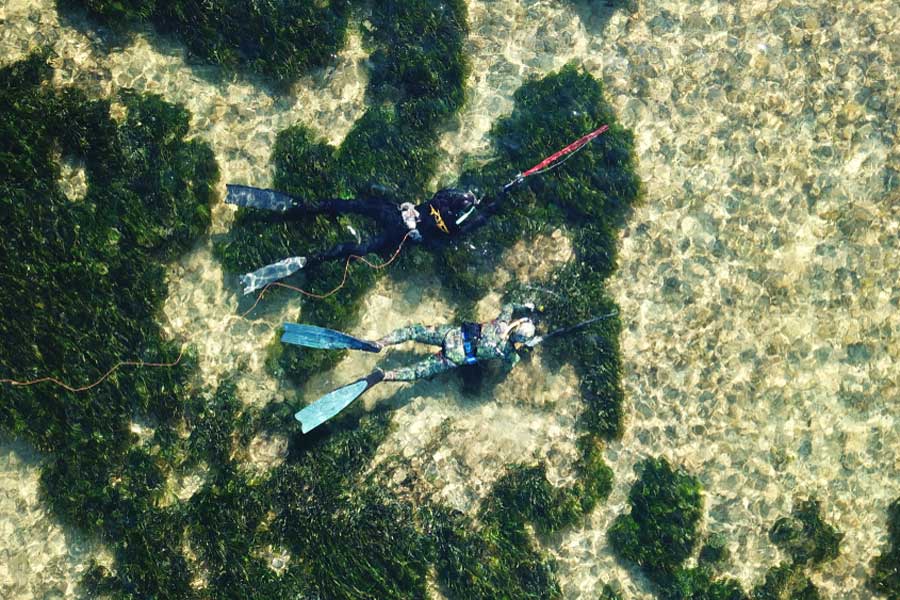
Spearfishing poses a lot of risks and dangers, so it’s always advisable to dive in pairs or even as a trio. Aside from being able to share and verify your catch, you can rely on each other in case you need help cutting a spear line or catching bigger fish.
And that’s pretty much it! You may need other miscellaneous accessories as well, depending on whatever it is you are trying to catch—like a containment unit for lionfish or a tickle stick to help you bag some lobsters. But overall, these are all the items you will need to add to your spearfishing gear shopping list.
Good luck!

